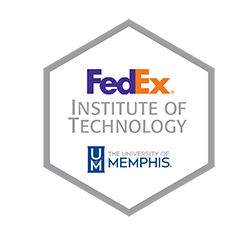DRONES Funded Research - 2016
Application of Amphibious Drone Technology to Enable Environmental Monitoring and Sampling to Support Disaster Response and Drinking Water Resource Protection
Dr. William Alexander
Environmental monitoring, water source protection, and disaster management frequently require chemists to access dangerous sites. With funding from the National Science Foundation, as well as the Institute, Dr. Alexander is researching how unmanned amphibious systems can be used to ensure safer research and more secure testing procedures. Inspired by the Elk River chemical spill of 2014 in his home state of West Virginia, which left over 300,000 residents without safe water for days and, in some cases, weeks, Dr. Alexander is working to not only keep disaster responders out of harm’s way but also to directly improve public health, help responders mount a proper response, and to dispel public fear. “We’ll have the ability to collect and analyze water quality data in real time at the source and also make rapid and accurate quantum chemical predictions about the extent and movement of the contamination,” he says. According to his studies, it takes an average of 6.5 days for robotics to be deployed in a disaster. “One of the things we are thinking about is how to decrease this response time using advanced logistical support.”
Considering the Potential Impact of Autonomous Vehicles on Transportation Planning and Equity in Memphis
Dr. Charles Santo
While cities like New York and San Francisco look to emerging transportation technology to solve problems of traffic and congestion, cities like Memphis are too sprawling and too large geographically to have the population density needed to support efficient fixed route transit. Dr. Santo is heading up research into how demand responsive shared autonomous vehicles such as driver less shuttles might allow for more efficient service in low-density or low-income areas. "This technology may someday give affordable, reliable transportation to those in Memphis who do not have access to personal automobiles," Santo says.
Secure Information Sharing among Autonomous Vehicles
Dr. Lan Wang
Communication between autonomous vehicles will be essential for safe, efficient travel. Dr. Wang's team is focusing on the application of Named Data Networks (NDN), a future internet architecture, to facilitate reliable and secure autonomous vehicle information sharing. "Given that so much effort is ongoing at major companies such as Google and Tesla on autonomous vehicles," Dr. Wang notes, "we are very likely to see a major change in urban transportation in the next ten years." With NDN, researchers are no longer bound by the limitations of the current TCP/IP architecture and are free to explore new approaches to various security problems—approaches that are already making an impact.
Integrated Platforms and Algorithms of Multi-sensory Data Capture and Decision Support for Autonomous Vehicles
Dr. Robert Kozma
Successful operation of autonomous vehicles in dynamically changing, complex environments
depends upon efficient multisensory data capture and decision support. Dr. Kozma is
studying how the living brain captures multisensory data and makes decisions in
order to develop algorithmic formulations that can be applied to the engineering of
autonomous vehicle control. The goal is to equip vehicles with the fundamental properties
of cognition. "In our project," he says, "we integrate sensory information from multiple
robotic platforms and provide the basis for decision-making, reconfiguration, and
control. The integrated sensory robot system cumulatively creates and learns knowledge
and integrates it to an internal model to guide its actions." Equipping autonomous
vehicles with a more robust decision support system will help them successfully navigate
in rapidly changing scenarios and unpredicted conditions, enhancing emergency response
to natural disasters and ensuring a quicker response to cyber security threats. "The
novel contributions of this research are manifested in the way the robot, with its
multisensory capabilities, makes the decision and action selection," Dr. Kozma says.
Deep Learning Enabled Non-invasive Cognitive Interface: Where Machine Meets the Mind
Dr. Mohammed Yeasin
Enhancing Human Capabilities using Unmanned Systems and Drones
Dr. John Hochstein, Mr. Robert Pap
Legal Aspects of Drones
Dr. Larry Moore
Engineering Novel light weight Supercapacitor: Batteries for Ultra-Light-Vehicles
Dr. Sanjay Mishra
Restoring Damaged Metallic Parts of Robots, Autonomous Vehicles, and Drones by Additive Manufacturing
Dr. Ebrahim Asadi
Investigating the impact of adopting/using drones on the bargaining power of farmers in a contract process
Dr. Euntae "Ted" Lee, Dr. Hyungchul "Kevin" Kim

